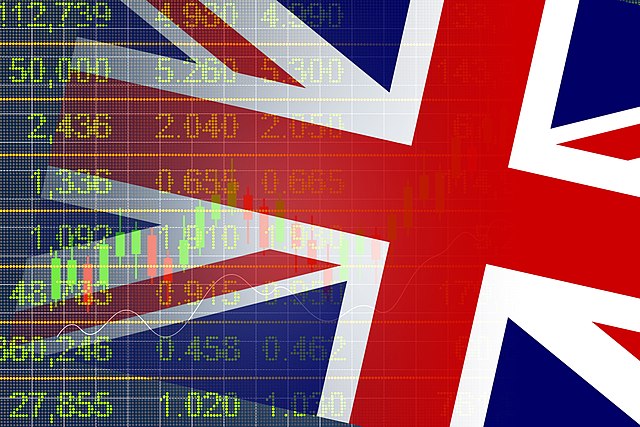As the UK braces itself to leave the EU’s jurisdiction, it bids farewell to everything that goes with it, including the infamous ‘Tampon Tax’. The scrapping of the tax has been hailed as a victory for Brexit. But what are we actually talking about?
What is the Tampon Tax and why should it be scrapped?
In the latest budget review, Rishi Sunak has pledged to finally scrap the so-called ‘Tampon Tax’ once the transition period is due to end on the 31st of December. The Tampon Tax is the rate of VAT that applies to sanitary products. The minimum rate of VAT set by the European Union on all female sanitary products is 5%, due to their ‘non-essential’ product status. It has been calculated that this VAT rate adds an average of 7 pence onto the cost of such products. Taxing sanitary products is an unnecessary cost added to a product that most people who menstruate must pay for monthly. According to a BBC calculator, a 50 year old woman who got their first period at 13 would have spent £1547.70 on sanitary products in their lifetime, and £145.73 of that would be VAT.
A lifetime saving of £145.73 may not seem like a significant amount of money to be saved if you are wealthy enough. But sanitary products are not luxury goods, they are products that all women need for one week a month, for a significant part of their life. This cost does not apply to those born of the male sex, adding to a list of advantages that men benefit from while women do not.
A mobilisation against the Tampon Tax was seen across several European states. In 2014 a change.org UK petition to scrap the tax generated over 300,000 signatures, and provided links to “sister campaigns” across Europe. British officials, however, continued to claim that EU legislation prevented them from removing the controversial tax. Today, in the wake of Brexit, the scheduled scrapping of the tampon tax is a necessary acknowledgment that sanitary products are, in fact, essential goods subject to non-essential taxation, rather than the reverse.
The relationship between the EU and VAT rates in the UK
In the UK, there are four different levels of VAT: the standard rate of 20%, a reduced rate of 5%, a zero rate and a full VAT exemption. The different VAT rates are set depending on the product they are applied to, specifically to ensure fairness and incentivise use of certain products. For example, in the UK, VAT on children’s car seats as well as on some energy-saving domestic installations are set at a reduced rate, while VAT for food and children’s clothes are set at zero. The EU sets broad VAT rules for its member states. VAT harmonisation is important to the functioning of the Single Market, as it minimises trade complexities and also encourages fair competition between member states. The EU aims to ensure that member states cannot use VAT rates as a way to gain an unfair advantage against others. While member states are free to choose their own standard rate of VAT, the EU rules state that they cannot be below 15%, and reduced VAT rates cannot fall below 5%. While the UK was able to keep its existing zero-rate products when it joined the European Community, it was not allowed to introduce new zero-rate items; nor can it move items back to zero-rate once it has removed them from this bracket. The same rules apply to all member states.
Article 98 of the VAT Directive states that a prescribed list of goods and services set by the EU are subject to a reduced rate of VAT and Annex III lists which goods and services that includes. The reduced VAT rates can be applied to “products used for contraception and sanitary protection”, thus resulting in the additional 5% that half of British consumers must pay for sanitary products. Sky News has reported that thanks to Brexit the tax will be dropped, as the “UK leaves EU rules”. However, the EU had pledged to scrap the tax even before the referendum.
The UK’s historic negotiations with the EU over the tax
In 2016, Labour MP Paula Sherriff successfully campaigned for the end of the Tampon Tax in the UK, and Parliament voted through an amendment to do so. However, former Chancellor George Osbourne declared the inability to do so as a result of the VAT legislation set by the European Union. Former Prime Minister David Cameron took the issue to the European Union, and obtained the support from other members of the European Council. In March 2016 the EU promised to modify the VAT regime so that it would “provide the option to member states of zero VAT rating”. Promises for policy change can take time to be implemented, and it was not until 2018 that the European Commission published proposals to abolish the tax, with implementation to take place in 2022 at the earliest. However, this proposal came two years after the historic Brexit result.
When Britain voted to leave the European Union, it had obtained the promise to eradicate the Tampon Tax, although it was yet to be set in stone. It is true, that leaving the European Union will give the UK greater control over its own VAT system, and for Paula Sheriff and anyone who campaigned for the abolition of Tampon Tax, this is welcomed news in view of its implication for achieving their goal.
However, the Tampon Tax did not necessarily have to become a contentious issue, and the UK government also used the EU as a scapegoat. Indeed, if the government had considered it an urgent issue, there were rapid alternative measures they could have taken to address it. For example, the Scottish parliament passed a bill in February that ensured free sanitary products would be provided to women of all ages, thus becoming the first country to eradicate all period poverty. This was made possible through a scheme that did not require any action from the European Union, and I hope that Westminster follows suit with this progressive measure.
A win for Brexit?
Scrapping the Tampon Tax has been hailed as a benefit from Brexit. However, it has become clear since that patience and collective pressure could have equally achieved a win for the UK government and anti-Tampon Tax campaigners alike. It would be false to claim that exit from the EU was the only way to make this progressive policy possible. Had the UK voted remain, forward thinking policies such as this could have still been achieved, but they would have progressed though collective action with other member states, while retaining the economic and political benefits of being part of the EU and its Single Market.
Tali Messiter is a third year Politics, Philosophy and Economics student at UEA. This blog post was written as part of her final year coursework for the module ‘Britain and Europe’.





